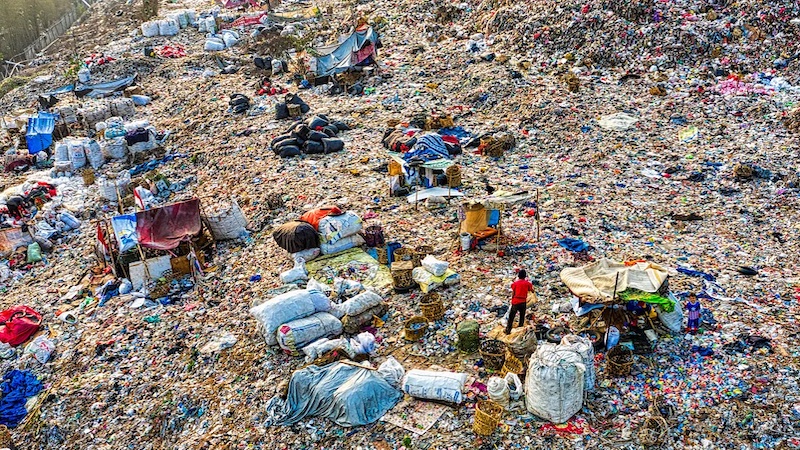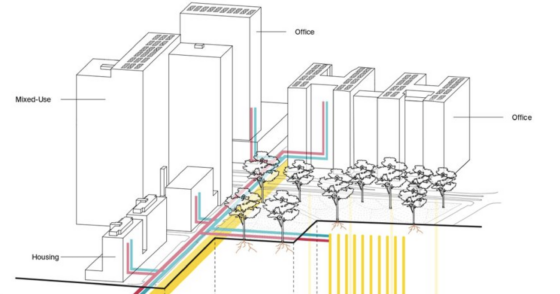Geothermal systems, when paired with the right climate and building programs, can turn waste heat into year-round efficiency, offering a powerful path...
Vous n'êtes pas connecté
- English
- Français
- عربي
- Español
- Deutsch
- Português
- русский язык
- Català
- Italiano
- Nederlands, Vlaams
- Norsk
- فارسی
- বাংলা
- اردو
- Azərbaycan dili
- Bahasa Indonesia
- Հայերեն
- Ελληνικά
- Bosanski jezik
- українська мова
- Íslenska
- Türkmen, Түркмен
- Türkçe
- Shqip
- Eesti keel
- magyar
- Қазақ тілі
- Kalaallisut ; kalaallit oqaasii
- Lietuvių kalba
- Latviešu valoda
- македонски јазик
- Монгол
- Bahasa Melayu ; بهاس ملايو
- ဗမာစာ
- Slovenščina
- тоҷикӣ ; toğikī ; تاجیکی
- ไทย
- O'zbek ; Ўзбек ; أۇزبېك
- Tiếng Việt
- ភាសាខ្មែរ
- རྫོང་ཁ
- Soomaaliga ; af Soomaali
Rubriques :
 Maroc - PHCPPROS.COM - A La Une - 02/09/2024 04:00
Maroc - PHCPPROS.COM - A La Une - 02/09/2024 04:00
Water, Entropy and the Future of Energy Management
Thermal energy networks help buildings communicate with each other in warmth and coolness through piping networks. New columnist John Mullen explains how these shared energy networks use “waste” heat from sewage wastewater, collected stormwater or existing fire suppression systems to use elsewhere in buildings.
Articles similaires
Myanmar Waste Problem: Subtle But Challenging – Analysis
By Thuta Aung Myanmar is facing a growing waste-management crisis as rising urbanisation, increased consumption, and ongoing conflict strain a...
Myanmar Waste Problem: Subtle But Challenging – Analysis
By Thuta Aung Myanmar is facing a growing waste-management crisis as rising urbanisation, increased consumption, and ongoing conflict strain a...
Brussels begins test-drilling in Maximilian Park for heating network
In the future, Brussels’ Maximilian Park will also serve as a source of heating and cooling for the surrounding buildings. Test drilling will begin...
Brussels begins test-drilling in Maximilian Park for heating network
In the future, Brussels’ Maximilian Park will also serve as a source of heating and cooling for the surrounding buildings. Test drilling will begin...
Using a New Model Specification for Ground-Source Geothermal Piping Systems
Ground-source heat pump systems depend on durable, properly specified plastic piping, and the new PPI MS-7 model specification helps engineers ensure...
Reservoir thermal energy storage offers efficient cooling for data centers
The rise of artificial intelligence, cloud platforms, and data processing is driving a steady increase in global data center electricity consumption....
Reservoir thermal energy storage offers efficient cooling for data centers
The rise of artificial intelligence, cloud platforms, and data processing is driving a steady increase in global data center electricity consumption....
Comment on Energy market rule maker wants to kill “loyalty tax” on consumers – and to hike fixed network charges by Paul Barnes
" customers like renters and high-use households with no means to cut grid power consumption or to change behaviour." Renters are overdue...
Trump Demands Mexico Stop Flow Of Raw Sewage Into The U.S.
In Southern California, local officials are now handing out air purifiers to residents choking on the stench of raw sewage — yes, including human...
Les derniers communiqués
-
Brussels airlines and ml tours enter 3-year partnership
SN BRUSSELS AIRLINES - 19/07/2023

